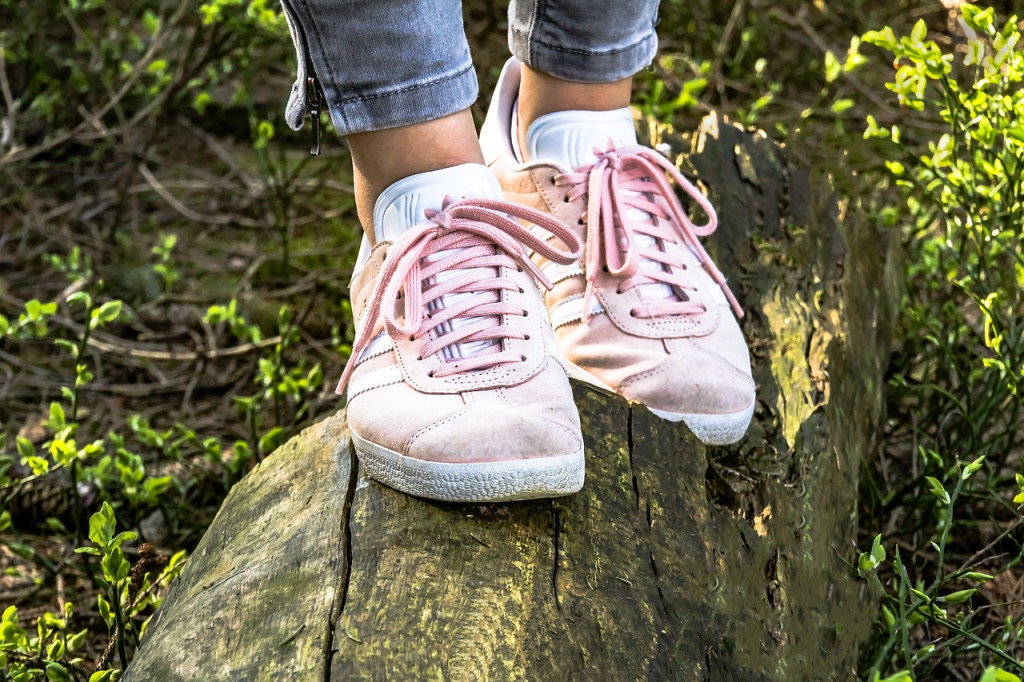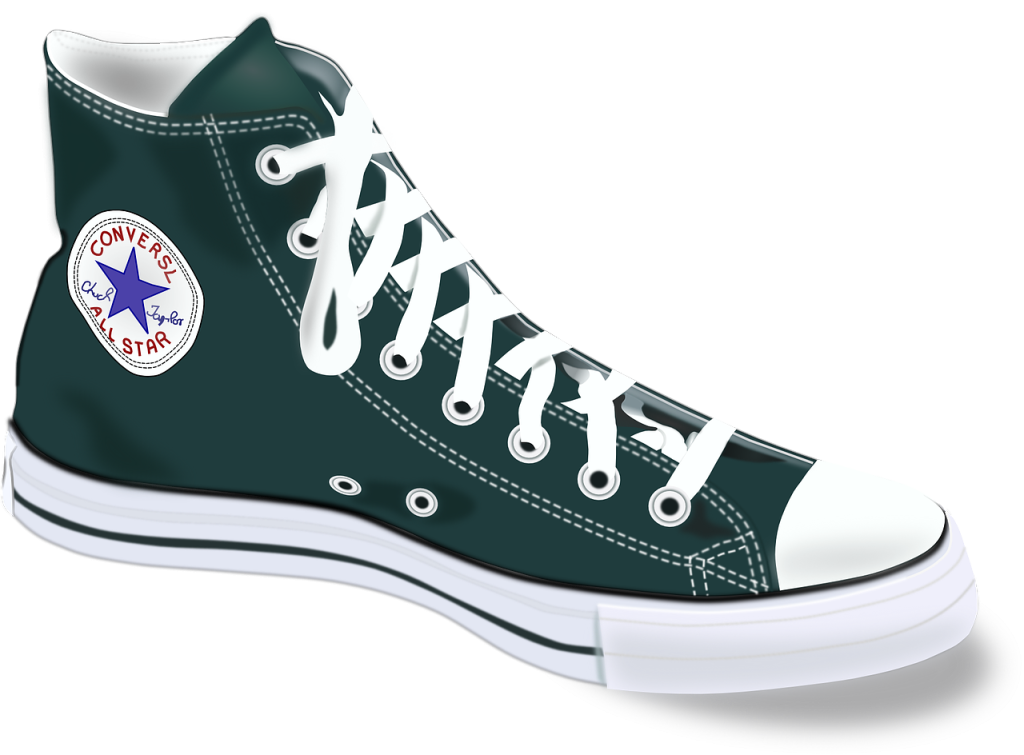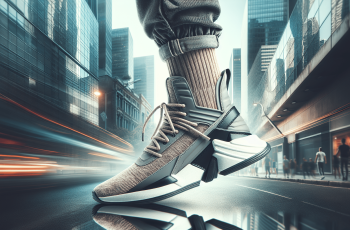Imagine walking down the street, each step accompanied by the whisper of sneakers gliding against pavement. Your eyes are drawn to a pair of low-top sneakers, their sleek design and vibrant color catching your attention. But what makes these sneakers stand out from the sea of options? In this article, we will explore the key elements that contribute to a high-quality low-top sneaker, examining the materials that make them durable, comfortable, and stylish. From the softness of the upper to the grip of the outsole, we’ll uncover the secrets behind what makes these sneakers a must-have in your footwear collection.
Materials
When it comes to choosing a quality low-top sneaker, the material is an important factor to consider. There are several different materials commonly used in the construction of sneakers, each with its own unique qualities and benefits.
Leather
Leather is a popular choice for sneaker materials due to its durability and timeless appeal. It is known for its exceptional quality, strength, and ability to age gracefully. Leather sneakers are not only stylish but also sturdy, making them a long-lasting investment for your wardrobe. They offer durability, often lasting for years without significant wear and tear.
Canvas
Canvas is another commonly used material for low-top sneakers. It is valued for its lightweight and breathable nature. Canvas sneakers often provide a more casual and laid-back look compared to leather options. The fabric allows air to circulate through the shoe, keeping your feet cool and comfortable, particularly in warmer weather. Canvas sneakers are also quite versatile, as they can easily be paired with various outfits.
Suede
Suede is a type of leather that has a softer and more velvety texture. It adds a touch of luxury and elegance to low-top sneakers. Suede sneakers are often favored for their stylish appearance and comfortable feel. However, they may require a bit more care to maintain their pristine look since suede is more prone to scuffs and stains.
Textile
Textile materials, such as nylon or polyester, are commonly used in the construction of sneakers. They offer a lightweight and flexible option, ideal for individuals looking for a comfortable and less restrictive fit. Textile sneakers are often preferred for athletic activities or for those seeking a more casual and sporty style.
Synthetic
Synthetic materials, such as synthetic leather or mesh fabrics, are gaining popularity in the world of sneaker construction. One advantage of synthetic materials is that they are often more affordable than genuine leather or suede. They can also offer a variety of features, such as water resistance or easy cleaning. However, synthetic materials may not provide the same level of breathability or longevity as natural materials.
Construction
The construction of a sneaker plays a crucial role in its overall quality and durability. Paying attention to the construction details will help you select a sneaker that will stand the test of time.
Stitching
Stitching is an important aspect of sneaker construction. Quality sneakers will have well-executed stitching that secures the various components of the shoe together. Look for sneakers with tight and even stitching, as this indicates attention to detail and a higher level of craftsmanship.
Seams
Seams are the points where different pieces of the sneaker upper are joined together. A high-quality sneaker will have reinforced seams that are securely stitched or even glued. This reinforces the structural integrity of the shoe and helps prevent tearing or splitting along the seams.
Reinforcements
Reinforcements are additional layers of material placed at specific points on the sneaker to add strength and support. Look for reinforcements at high-stress areas, such as the toe cap or heel counter. These reinforcements enhance the overall durability and longevity of the sneaker.
Padding
Padding provides both comfort and support. A well-padded sneaker will have sufficient cushioning around the collar, tongue, and insole. This padding not only enhances comfort but also helps to absorb shock and reduce strain on your feet and joints.

Outsole
The outsole of a sneaker is the bottom part of the shoe that makes contact with the ground. It plays a significant role in providing traction and protecting your feet from impact. Consider the following aspects when evaluating the outsole of a quality low-top sneaker.
Rubber
Rubber outsoles are a popular choice for sneakers due to their excellent grip and durability. They provide reliable traction on various surfaces, including both wet and dry conditions. Rubber outsoles also offer flexibility, allowing your feet to move naturally with each step.
Traction
Traction is the ability of the outsole to grip the ground effectively. A high-quality sneaker will have a patterned outsole with deep grooves or lugs. This design helps to prevent slippage and provides stability, especially on uneven or slippery surfaces.
Durability
A quality sneaker should have an outsole that is built to last. Look for outsoles made from durable materials, such as high-quality rubber or synthetic compounds. Sneakers with a well-constructed outsole will be able to withstand regular use without significant wear or deterioration.
Midsole
The midsole is the layer of material between the outsole and the insole of a sneaker. It is responsible for providing support, cushioning, and shock absorption. Consider the following factors when assessing the midsole of a low-top sneaker.
Support
A quality midsole should offer adequate support for your feet. Look for sneakers with a midsole that provides a combination of stability and flexibility. The midsole should effectively distribute your body weight and help prevent excessive pronation or supination.
Cushioning
Cushioning is essential for comfort and impact absorption. A well-cushioned midsole will provide a comfortable and responsive feel as you walk or run. Look for sneakers with midsoles made from materials such as EVA (ethylene-vinyl acetate) or polyurethane foam, as they are known for their excellent cushioning properties.
Shock Absorption
Shock absorption is particularly important for athletic activities or prolonged periods of walking. A quality midsole will have effective shock-absorption properties, reducing the impact on your feet and joints. Look for sneakers with responsive cushioning systems or specialized technologies designed to absorb and disperse shock.
Arch Support
Arch support is crucial for individuals with low or high arches. A quality midsole will provide adequate arch support, promoting proper alignment and reducing the risk of foot discomfort or injuries. Look for sneakers with built-in arch support or options that allow for the use of custom orthotics if needed.

Insole
The insole, also known as the footbed, is the interior part of the sneaker where your foot rests. It contributes to comfort, support, and overall foot health. Consider the following aspects when evaluating the insole of a low-top sneaker.
Comfort
A quality insole should provide a comfortable and supportive foundation for your feet. It should have sufficient padding to cushion your feet and reduce pressure points. Look for sneakers with removable insoles, as they allow you to customize the fit or replace them with orthotic inserts if desired.
Moisture-Wicking
Moisture-wicking properties are especially important if you tend to perspire or if you live in a humid climate. A quality insole will have moisture-wicking features, drawing moisture away from your feet and helping to keep them dry and fresh.
Arch Support
Just like the midsole, the insole should provide adequate arch support for your feet. Look for sneakers that offer built-in arch support or options that accommodate custom orthotics if you require additional arch support.
Breathability
Breathability is essential to ensure adequate airflow and prevent trapped moisture or odors. Look for sneakers with insoles made from breathable materials, such as perforated foam or moisture-wicking fabrics. This will contribute to the overall comfort and hygiene of the shoe.
Upper
The upper is the part of the sneaker that covers the top of your foot. It plays a significant role in determining the fit, breathability, flexibility, support, and aesthetics of the shoe. Consider the following factors when examining the upper of a low-top sneaker.
Fit
A quality upper should provide a secure and comfortable fit. Look for sneakers with uppers that mold to the shape of your feet without feeling too tight or restrictive. The upper should offer sufficient space for toe movement while keeping your foot securely in place.
Breathability
Breathable uppers allow air to circulate through the shoe, keeping your feet cool and dry. Look for sneakers with uppers made from materials such as mesh or perforated leather. These materials promote airflow and ventilation, particularly in warmer weather.
Flexibility
A flexible upper is essential for natural foot movement. Look for sneakers with uppers that bend and flex easily, allowing your feet to move naturally without restriction. This flexibility enhances comfort and reduces the risk of discomfort or injuries, especially during prolonged wear or physical activities.
Support
A quality upper should provide sufficient support for your feet, particularly around the heel and midfoot. Look for sneakers with uppers that have extra reinforcement or overlays in these areas. This support helps to stabilize your feet and prevents excessive movement or pronation.
Aesthetics
The appearance of the upper is often a personal preference. Consider the color, pattern, and overall design of the sneaker. Opt for a style that suits your taste and complements your wardrobe. Keep in mind that a quality sneaker should not compromise style for functionality.

Laces
Laces are an essential component of a sneaker, as they allow you to adjust the fit and secure the shoe to your feet. Consider the following factors when evaluating the laces of a low-top sneaker.
Durability
The durability of the laces is crucial since they endure constant pulling and tightening. Look for sneakers that come with durable laces made from materials such as nylon or polyester. These materials are known for their strength and resistance to fraying or breaking.
Tightening Mechanism
A quality low-top sneaker should have a reliable tightening mechanism. Look for sneakers with laces that allow for easy adjustment and secure fastening. Some sneakers may incorporate additional features such as lace locks or elasticized laces for added convenience and a snug fit.
Aesthetics
Laces also contribute to the overall aesthetics of the sneaker. Consider the color, length, and design of the laces, as they can enhance the overall style and appearance of the shoe. Opt for laces that complement the sneaker and reflect your personal style.
Tongue
The tongue of a sneaker is the padded strip of material that sits under the laces and provides comfort and support to the top of your foot. Consider the following aspects when examining the tongue of a low-top sneaker.
Padding
A well-padded tongue adds comfort and helps distribute the pressure from the laces evenly across the top of your foot. Look for sneakers with a tongue that offers sufficient padding to reduce discomfort or irritation, particularly during extended wear.
Fit
The tongue should fit comfortably and snugly against the top of your foot. Look for sneakers with a tongue that stays in place and doesn’t slide to the sides or bunch up. A properly fitted tongue contributes to the overall comfort and stability of the sneaker.
Breathability
Breathability is a desirable feature in the tongue of a low-top sneaker. Look for sneakers with perforated or mesh-lined tongues that allow for air circulation. This helps prevent excessive moisture build-up and keeps your feet cool and dry.
Heel
The heel of a sneaker plays a vital role in providing support, stability, and cushioning. Consider the following aspects when evaluating the heel of a low-top sneaker.
Support
A quality low-top sneaker should offer sufficient heel support. Look for sneakers with a well-structured and stable heel cup. This helps prevent excessive heel movement and provides support during walking, running, or other physical activities.
Stability
Stability is essential for a secure and confident stride. A well-designed heel will have additional support or reinforcements to promote stability. Look for sneakers with features such as heel counters or TPU (thermoplastic polyurethane) plates that enhance stability without compromising flexibility.
Cushioning
Cushioning in the heel area helps absorb the impact of each step and provides enhanced comfort. Look for sneakers with adequate cushioning in the heel, either through specialized foam or gel inserts. This cushioning helps reduce strain on your joints and contributes to a comfortable walking experience.
Collar
The collar of a sneaker refers to the padded area that surrounds the ankle. It plays a crucial role in providing comfort, ankle support, and overall foot stability. Consider the following aspects when examining the collar of a low-top sneaker.
Padding
A well-padded collar enhances comfort and helps prevent irritation or chafing around the ankle. Look for sneakers with a collar that offers sufficient padding to cushion the ankle and provide a comfortable fit. This padding also helps prevent discomfort during prolonged wear.
Ankle Support
The collar of a sneaker should provide adequate support to the ankle. Look for sneakers with a collar that holds the ankle securely in place without feeling overly restrictive. This support helps reduce the risk of ankle sprains or injuries, particularly during physical activities or sports.
Comfort
Comfort is essential when it comes to the collar of a low-top sneaker. Look for sneakers with a collar that fits comfortably around the ankle without causing excessive pressure or rubbing. A well-designed collar contributes to the overall enjoyment and wearability of the sneaker.
In conclusion, selecting a quality low-top sneaker involves considering various factors that contribute to its overall construction and performance. From the materials used to the construction details and fit, each aspect plays a role in the comfort, durability, and style of the sneaker. By understanding the different components and their importance, you can make an informed decision and find the perfect low-top sneaker that meets your specific needs and preferences. So, lace up and step out with confidence in a quality pair of low-top sneakers tailored to your style and comfort. Happy sneaker hunting!


